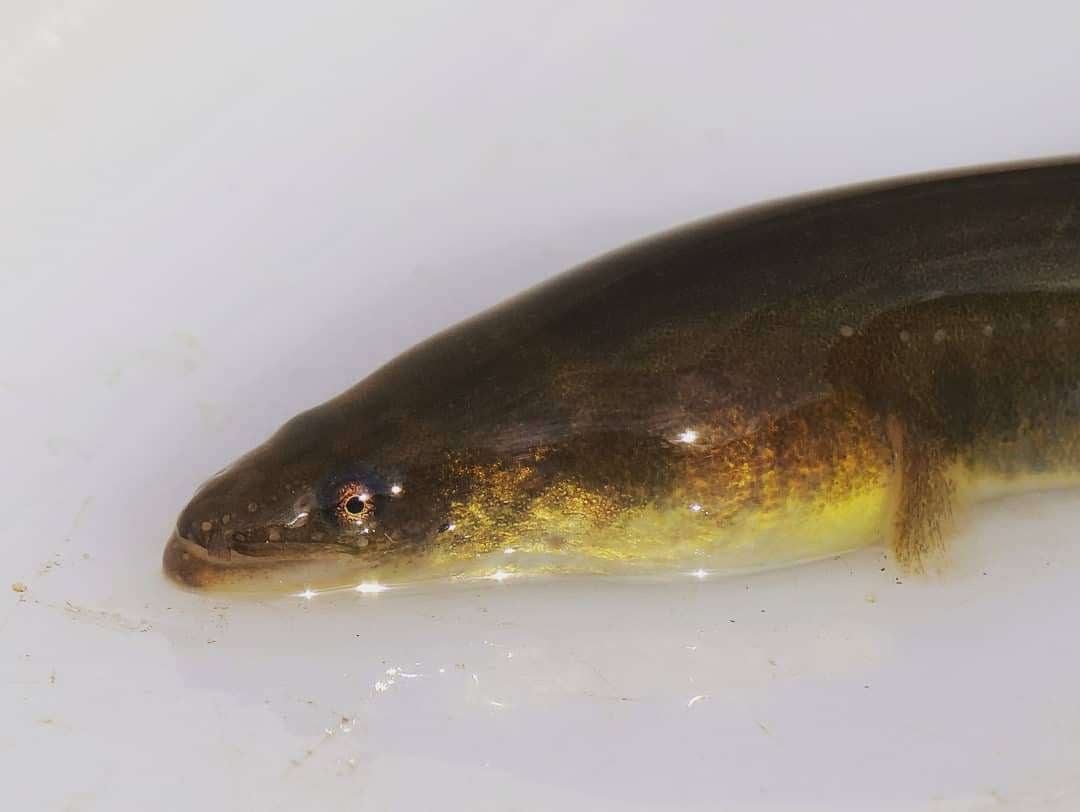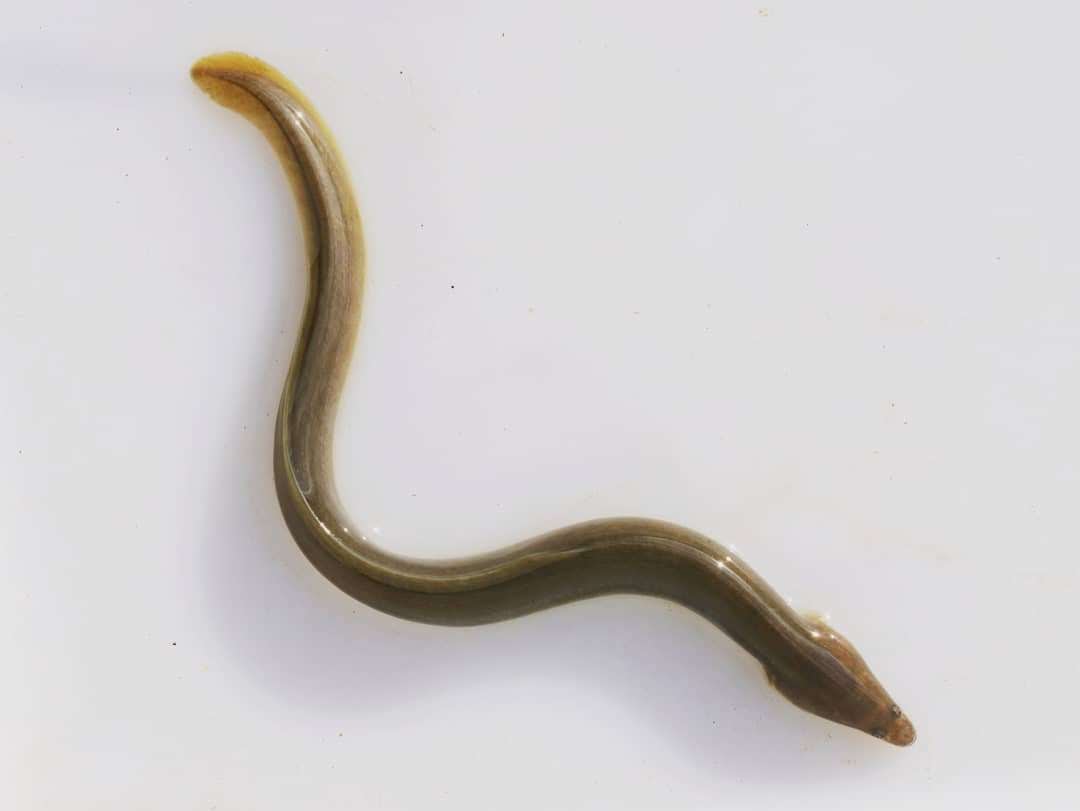
The Critically Endangered European Eel
Every year Deptford Creek is visited by a rare and mysterious creature. The critically endangered European Eel, Anguilla anguilla, can be found in Deptford Creek year-round with sightings increasing in the summer months. This incredible species has had no easy journey to make it this far, and will have many obstacles before their life cycle is complete.
There is still much unknown to biologists and environmentalists about the European eel’s life cycle. One thing that is known however, is that they begin their lives in the Sargasso Sea – an area of calm blue water in the Atlantic Ocean which is bounded by 4 ocean currents and home to the infamous Bermuda Triangle. After the eggs have been spawned and fertilised (an event which has never actually been witnessed) they float to the surface and hatch. One of the 4 ocean currents, the Gulf Stream, begins to move the leaf-shaped larvae towards western Europe and northern Africa. This journey of around 6000km is the longest known migration of any eel species and it is a treacherous one, with only around 0.2% of the larvae estimated to survive the voyage.

Upon reaching the shore the eels begin their transformation to more familiar looking glass eels, which then darken to become elvers. This darker colour will help them camouflage in preparation for the freshwater stage of their lives. Some of the animals that we see in Deptford Creek will find habitat and food in the Creek for part of this journey, while most others will continue their journey upstream. Eels are resilient and determined creatures and have been known to climb vertical barriers and can even crawl through wet grass to cross land. In freshwater the elver will mature into a yellow eel and can spend as long as 20 years in this stage. Mystery surrounds the next stage of the cycle too, as it is unclear what sparks the physiological changes necessary to return to salt water. The yellow eels transform into silver eels and will make their way back to the Sargasso Sea to breed. And so, the monumental journey begins again.
European eel numbers massively declined in the 20th and 21st centuries meaning they are now critically endangered on the IUCN Red List, with their population continuing to decrease. One of the key threats noted by IUCN and many conservation organisations is the use of dams, tidal gates, weirs, barrages and other physical barriers which can interfere with their ability to migrate and find suitable habitat to mature. The water quality of the freshwater systems is also critical to their survival. Our hope is that the Tideway project will contribute to the reduction in pollution in the Thames and its tributaries by preventing domestic waste and associated pollutants from entering the river.

At Creekside we will continue to monitor this amazing species as one part of a resilient and functioning ecosystem. By contributing to awareness of the biodiversity in Deptford Creek, as well as our continued conservation work in the Creek to enhance the floral diversity we aim to protect the system as a whole. Next time you visit Creekside maybe you will be able to get up close with a European eel! You can marvel at the magnificent journey they have made to reach us and wonder about all the things we are yet to discover about this incredible animal.
References:
https://www.iucnredlist.org/species/60344/45833138
https://www.nature.scot/plants-animals-and-fungi/fish/freshwater-fish/european-eel
https://www.youtube.com/watch?v=WBRnNk_uo9Y
https://www.youtube.com/watch?v=xXeLLUHOZFg
https://www.zsl.org/conservation/regions/uk-europe/eel-conservation
< Wetlands Surveys Creekside Discovery Centre Open Day - Saturday 17th September, from 11:00 until 15:00 >Tagged under: Wildlife
